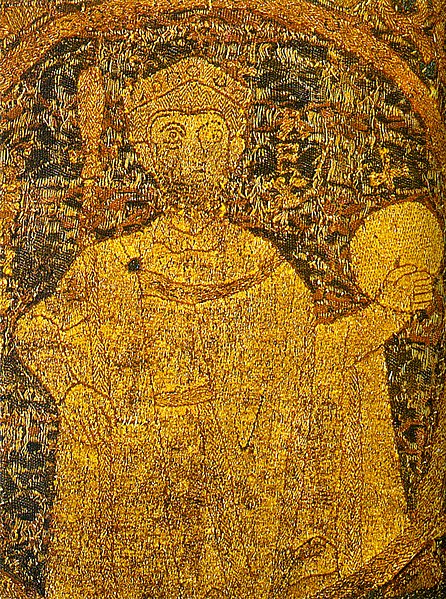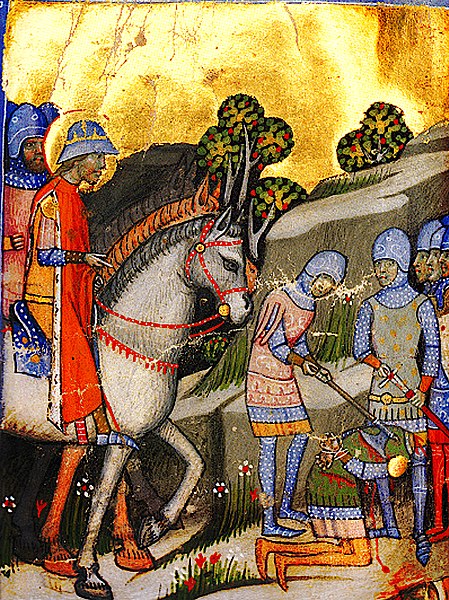Peter Orseolo, or Peter the Venetian, was the King of Hungary twice. He first succeeded his uncle, King Stephen I, in 1038. His favoritism towards his foreign courtiers caused an uprising which ended with his 1041 deposition. Peter was restored in 1044 by Henry III, Holy Roman Emperor. He accepted the Emperor's suzerainty during his second reign, which ended in 1046 after a pagan uprising. Hungarian chronicles are unanimous that Peter was executed by order of his successor, Andrew I, but the chronicler Cosmas of Prague's reference to his alleged marriage around 1055 suggests that he may also have survived his second deposition.
From the Illuminated Chronicle
Peter, King of Hungary (Nádasdy Mausoleum, 1664)
The 1044 Battle of Ménfő
The blinding of Peter, as depicted in the Illuminated Chronicle
Stephen I, also known as King Saint Stephen, was the last Grand Prince of the Hungarians between 997 and 1000 or 1001, and the first King of Hungary from 1000 or 1001, until his death in 1038. The year of his birth is uncertain, but many details of his life suggest that he was born in, or after, 975, in Esztergom. He was given the pagan name Vajk at birth, but the date of his baptism is unknown. He was the only son of Grand Prince Géza and his wife, Sarolt, who was descended from a prominent family of gyulas. Although both of his parents were baptized, Stephen was the first member of his family to become a devout Christian. He married Gisela of Bavaria, a scion of the imperial Ottonian dynasty.
Portrayal of Stephen I on the Hungarian coronation pall (chasuble) from 1031
Stephen I of Hungary
Stephen's birth depicted in the Illuminated Chronicle
Koppány's execution after his defeat by Stephen, depicted in the Chronicon Pictum




